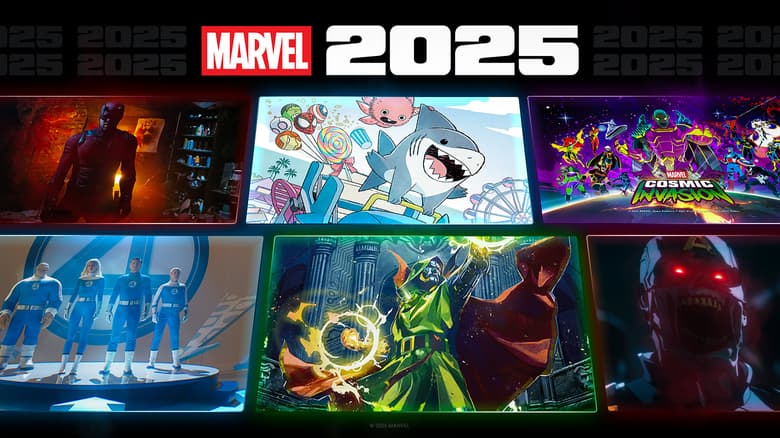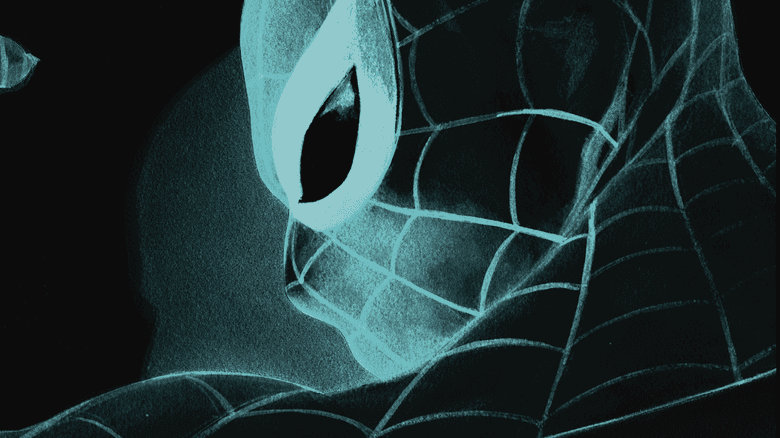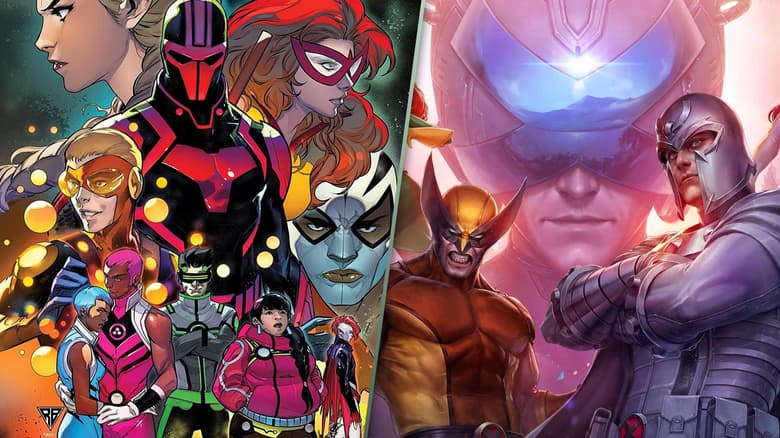Making 'The Marvels' with Kurt Busiek, Yildiray Cinar, and Tom Brevoort
The writer, artist, and editor of 'The Marvels' present an inside look at the series!
In 1994, working with revolutionary comics illustrator Alex Ross, Kurt Busiek wrote the game-changing MARVELS limited series, a look at the Marvel Universe and its super powered inhabitants through the lens of an average citizen. Four years later, the writer kicked off a four-year run on AVENGERS that didn’t just restore Earth’s Mightiest Heroes to lofty heights, it elevated the team to its highest level of all-time.
Flash forward to 2021, and after months of anticipation, Busiek has launched ambitious new ongoing series THE MARVELS, which combines elements of his most celebrated prior projects and takes Super Hero storytelling to a new plateau. Working once again with cover artist and designer Ross, the scribe also reunites with AVENGERS editor Tom Brevoort on this new endeavor as they all welcome artist Yildiray Cinar to the fold.

We spoke with Busiek, Cinar and Brevoort about the unique genesis of THE MARVELS and what it takes to create a series that encompasses every character and aspect of the Marvel Universe.
Where did the general concept for THE MARVELS come from?
Kurt Busiek: Years back, when I was working on AVENGERS, there were people who wanted Spider-Man and Wolverine to join—which they’ve done since!—but I didn’t really like the idea. Still, I liked the concept of a book that would have lots of the major stars of Marvel, whether they belonged in a team together or not. I told Tom maybe there could be a book like that, one where multiple characters could come together, even if they’re not a team—and like in a Tom Clancy novel, there could be multiple threads, so characters could take part even if they didn’t meet the others.
The title that made the most sense to me was THE MARVELS, and I had some dumb idea about some mysterious new character—a controller who pulled all these characters together, like it or not. But that never seemed to gel right in my head, and I was busy on other things, so we never pursued it. Back then, anyway.
Tom Brevoort: The specific idea of the Siancong War goes back to the late 1990s when we were working on AVENGERS and other titles. The idea was first floated there as something that Kurt and Roger Stern and Mark Waid were going to establish across a few different titles. But it wound up not happening then—and now, 20 years later, there’s an even greater need for it timeline-wise. So we’re just doing it here, in THE MARVELS.
Busiek: The idea was to do a mini-crossover between IRON MAN, CAPTAIN AMERICA: SENTINEL OF LIBERTY, MARVEL UNIVERSE and maybe AVENGERS that was loosely called War Dragons, that would tell the story of a war in Siancong (back then still called Sin-Cong) over a span of years, since each of those books took place in a different time period. In MARVEL UNIVERSE we’d have seen the beginning of it, in SENTINEL OF LIBERTY we’d have seen the war at its height and in IRON MAN we’d see the modern-day repercussions.
Part of the idea was that we’d then have a fictional war that could serve as the place where Flash Thompson could have seen military service, where Iron Man’s origin could have taken place, stuff like that. Little did we know, back then, there’d be a real-world war in Afghanistan that’d run for 20 years…
Anyway. That didn’t go anywhere either, back then.

How did the idea evolve over time?
Busiek: When we started talking about ideas for the 25th anniversary of MARVELS, the idea of doing THE MARVELS came up again. But it wouldn’t be quite the same thing, because the Avengers series had conceptually changed, and there really wasn’t a need to do a “big heroes together” book. But the idea of a book that’d draw characters from across the Marvel Universe, that’d freely use anyone from anywhere—and maybe from any time, too—was appealing.
The idea for War Dragons got folded into this, not so much to focus on the war, as was our original intention, but to use as a story that’d need to range over time, and could involve a lot of the Marvel Universe from the top stars to more obscure characters, and fold in bits of history as well.
And a mysterious manipulator even showed up—though one extremely different from what I’d been thinking of originally.
And there was a point over the years where Tom and I talked about a modern-day Invaders series, and that whole opening stunt in THE MARVELS #1 with the HALO dive from orbit and the smoke-grenade entry of the heroes, that was something I’d thought up for that, but it fit here really well. And that got me started folding in other bits and ideas, and it developed into what we’re actually doing.
It’s actually developed further as we’ve been doing it, and that’s been fun too.
Yildiray, how were you approached to be a part of this book?
Yildiray Cinar: Tom contacted me and informed me about the project. He also told me Kurt mentioned my name which was an amazing moment for me. I always hoped to work with Kurt someday. Alex Ross was on designs. Of course, I jumped on the book.
What has the collaborative process with Kurt been like?
Cinar: It is great. We are working “Marvel style” method. This gives me some freedom and space. Of course, we always talk on every stage. I get the plot and send rough pencilled pages to Kurt and Tom and the rest of the team. After discussing what should be there and not, all I need to do is finish the pages. This is a busy book so we are always in contact.

How do you select which characters to feature?
Busiek: At the start, as I noted, we wanted major characters from across the Marvel Universe, so I was, say, picking a couple of Avengers, an X-Men, a member of the Fantastic Four, someone from the Spider-Man corner of the Marvel Universe, someone from the recent development with Asian characters, etc.
From there, we kind of went where the story took us. In picking members of Reed Richards’ exploratory squad in issue #3, for instance, we had a joint American-French operation, so using a couple of French characters like Batroc and the future Peregrine was fun, as was bringing in from the U.S. side, the pre-M.O.D.O.K. George Tarleton—who I wanted to use in a future story anyway—and “Crash” Simpson from old GHOST RIDER stories.
So there’s a certain amount of “we need characters popular enough to make readers want to check the book out” and also “we need characters who’ll serve the story,” and then a heaping helping of “who does Kurt want to write?” Using Powderkeg, for instance—I needed a pretty simple villain for an action scene with Aero, and I like Powderkeg, so blah, in he goes.
There are characters I’d like to use in the future because, well, I like them. And I know Yildiray likes some of them too, so I’d be more likely to grab characters I know he’ll get a kick out of drawing.
It’s not really systematic. We want the book to be appealing, we want it to be surprising, and we want to have fun. Whatever works for that.
Who from around the Marvel Universe will we see upcoming?
Busiek: There are a few minor characters who’ll be popping up here and there. I wouldn’t want to announce them ahead of time because it’s more fun when they’re a surprise.
Beyond that, I’m currently plotting the third act of this first story, which isn’t a great time to bring new major characters in—you kind of want to get them on stage in Act One. And this first story arc has been longer than I expected—at first I thought it’d maybe be seven issues, but with all the characters who need some room to breathe, and the chapters set in the past, we quickly wound up with a 12-issue arc, and even then I had to reach a resolution that’ll allow the other half of the story to come up again later.
Tom and I haven’t talked about what might come after this arc yet, but I will confess to a powerful urge to write Iron Fist again, maybe back in the continuity of the '70s or early '80s. And Namorita. And others. There’s a great character from back then called Wundarr, and I keep threatening to bring him back—he got turned into the Aquarian years ago, but he was much more fun before that.
And you never know when the Jack of Hearts might show up. Yildiray’s up for it, but he hasn’t had to draw that costume for multiple issues in a row, so he might change his mind fast.
Plus, you know, bigger names too.

Who has been the most fun to draw so far, Yildiray?
Cinar: Not sure. I know this will sound ordinary but the cast of the book is all fun to draw. But there is Spider-Man... Anyways, in the latest pages I just finished, Vision was my favorite.
Who do you still hope you get to draw?
Cinar: I am hoping for a Hulk but you never know who you will see in this book.
What was the creative process behind coming up with Kevin Schumer as a POV character?
Busiek: I don’t exactly remember where the idea for Kevin started—for years, I’d had the image in my head of someone using an old Zodiac star-blazer pistol that had been salvaged somewhere. And that turned into the idea of a guy doing salvage operations at Super Hero battle sites, using this broken and reconditioned tech from Marvel history.
And while we were talking about THE MARVELS, it seemed like a good idea to have a character who wasn’t a full-on Super Hero, but could give us a different perspective on their world than we usually get—and I got this image of a college kid doing “Super Hero tours” of Manhattan in a rusty, beat-up old Fantasticar.
That became Kevin. And it seemed like a natural fit to connect him to the Tinkerer.
And I dumped all this on Alex Ross, who did a beautiful job designing him, and he turned out to be a blast to write. I just wish I had more room to get into even more about him.

Yildiray, what contributions have you made in terms of original designs for characters as well as environments?
Cinar: I think this is the first time we see Siancong in such detail. Of course it was there since AVENGERS (1963) #18, but I think this is the first time we are taking a much [more] detailed look [at the] country both its historic and current view.
Also I got to design Lady Lotus' new look. All other new characters like Kevin, Warbird, Vision and Threadneedle are Alex's designs but I am the first artist to draw them in the pages, which is awesome.
Can a reader new to the Marvel Universe appreciate this book as a guide or is it designed for the more hardcore fan?
Busiek: If you’re new to Marvel, I think and hope it’s a great way in—a place to see the full sprawl of the Marvel Universe and get to know it without needing an advanced degree in continuity. If you’re a longtime devotee, we’ll bring back characters you haven’t seen in years. So hopefully, THE MARVELS will be a treat no matter how much you know.
It’s one-stop shopping for an entire continuum. And beyond.
What do readers need to know about Siancong in order to fully appreciate the story?
Busiek: Nothing. We introduce Siancong in issue #1 and see more of it in issue #2, all of which should bring readers up to speed. And in later issues, we’ll see how the Siancong War started and why, and how it ended as well.
I think readers shouldn’t have to do any research before reading a story—it’s part of my job to make sure what they’re holding in their hands (or reading on screen) is enjoyable, understandable and welcoming all by itself. There should never be homework involved in reading comics.
That said, if readers want to read any of the earlier appearances of Siancong, like AVENGERS (1963) #18, where it was seen for the first time, or AVENGERS SPOTLIGHT #22, which had the origin of the Swordsman, that could be fun. But they don’t need any of it.

What would be other recommended reading before diving into THE MARVELS?
Busiek: Again, we’re making sure the stories don’t have any required reading. But if people want to know more about some of the characters we’re using, they’re all over Marvel history.
I won’t tell you where to find more Spider-Man or Captain America stories, but the Iron Man story in TALES OF SUSPENSE #41 would give readers a look at the first (and only) time Carlo Strang has appeared before.
Or DAREDEVIL (1964) #47, for another angle on a scene in THE MARVELS #1.
Or the appearances of Lady Lotus in INVADERS (1975) #37-41 and CAPTAIN AMERICA: FOREVER ALLIES.
Aero’s appearances in her own series or in AGENTS OF ATLAS would be a good place to learn more about her, and of course X-Men stories from HOUSE OF X/POWERS OF X onward will show the current status quo Storm is working from.
Aarkus, the Golden Age Vision, readers could go back to his earliest appearances in MARVEL MYSTERY COMICS starting with issue #13 or the AVENGERS/INVADERS mini-series or ALL-NEW INVADERS #1-5.
I could keep going—Reed Richards’ whole crew in THE MARVELS #3 have histories elsewhere in the Marvel Universe, Ace showed up in two SPECTACULAR SPIDER-MAN Annuals, the Tinkerer has made many appearances in Spider-Man stories and elsewhere. Even Powderkeg has kicked around Marvel history a bunch.
But that’s how this series works—when we said “Anyone, anywhere, any time,” we weren’t kidding around. We’re using characters from everywhere.
But you won’t have to know anything about them. If you want to know more, I can recommend looking them up... Who knows, we might even bring back Thunderboot, or Ixar and the Ultroids.
But you’ll get all you need to know from THE MARVELS itself.
Read THE MARVELS on Marvel Unlimited and at your local comic shop today!
The Daily Bugle
Can’t-miss news and updates from across the Marvel Universe!








